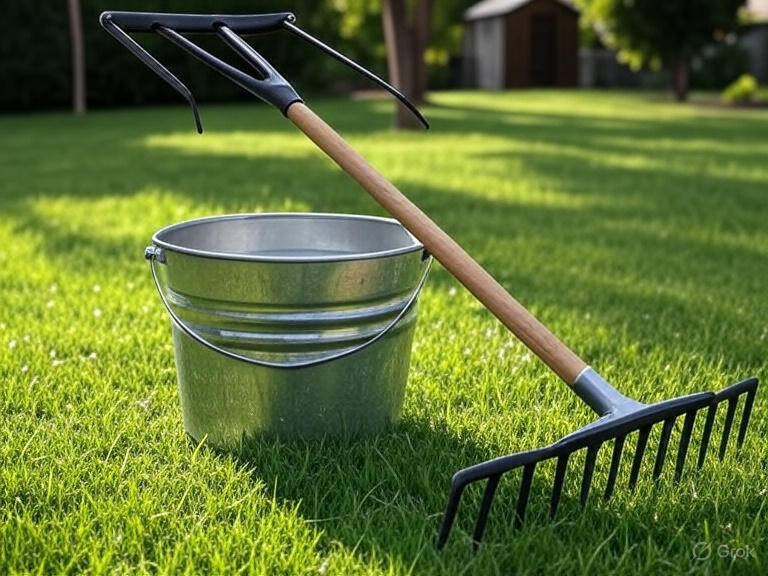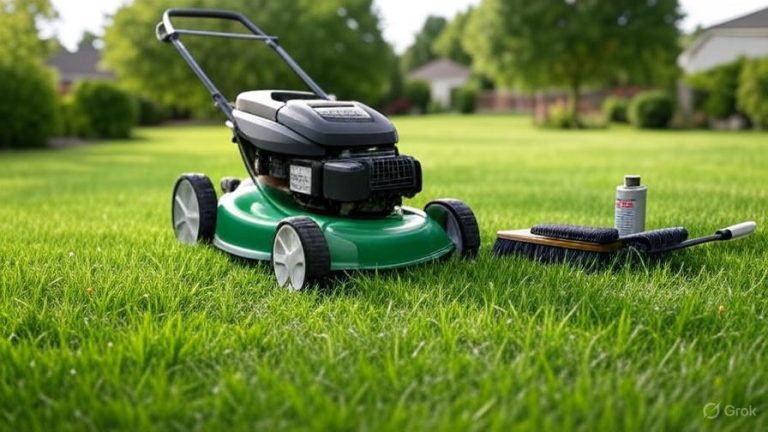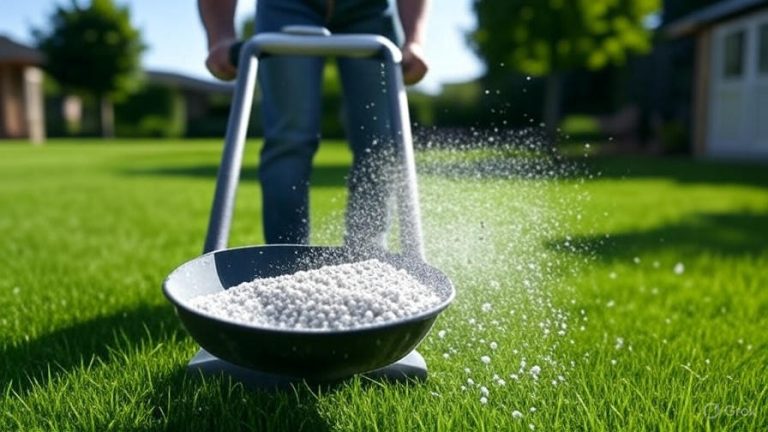How to Get Rid of Army Worms?
Army worms can destroy your entire lawn or garden in just a few days. These hungry caterpillars march across your yard like tiny soldiers, eating everything in their path. I’ve dealt with these pests many times, and I know how frustrating it feels to watch your beautiful grass turn brown overnight.
The good news is that you can fight back. This guide will show you exactly how to identify army worms, stop them from spreading, and protect your lawn for the long term.
What Are Army Worms?
Army worms are the larval stage of small brown moths. These caterpillars got their name because they travel in large groups, moving from one area to another like an invading army. When they find your lawn, they feed day and night, causing serious damage quickly.
An adult army worm caterpillar grows about 1.5 to 2 inches long. They have smooth bodies with stripes running down each side. The color ranges from green to brown, and most have a distinctive inverted Y-shape on their head. You’ll notice small dark spots along their bodies too.
These pests attack many types of grass, including Bermuda grass, zoysia, St. Augustine, and fescue. They also eat vegetables, corn, soybeans, and ornamental plants. Nothing in your yard is truly safe when army worms arrive.
Signs of Army Worm Damage
Spotting army worm damage early saves you a lot of trouble. The first sign is usually patches of grass that look chewed or ragged. The damage appears almost overnight, which separates army worm problems from other lawn issues.
Your grass blades will have irregular brown patches that spread rapidly. The edges of these patches look jagged because the worms chew from the tip of the grass blade downward. You might see small brown pellets on the grass too – these are army worm droppings.
Birds suddenly gathering on your lawn signal a possible infestation. These smart creatures know army worms make an easy meal. If you see more birds than usual pecking at your grass, check for caterpillars.
Look for the worms themselves early in the morning or late evening. They hide in the soil and grass thatch during hot daytime hours. Pull back some damaged grass and examine the soil surface. Army worms cluster together, so you’ll likely find several at once.
The most telling sign is the “armyworm test.” Mix 2 tablespoons of dish soap with 1 gallon of water. Pour this mixture over a square yard of damaged lawn. If army worms are present, they’ll come to the surface within 10 minutes, crawling around trying to escape the soapy water.
Why Army Worms Invade Your Lawn
Army worms don’t just appear randomly. Several conditions attract these pests to your property. Knowing what brings them helps you prevent future invasions.
Moist, lush lawns attract army worm moths looking for places to lay eggs. A female moth can lay up to 1,000 eggs in her lifetime. She prefers tall grass because it provides shelter for her eggs and the hatching larvae.
Weather plays a big role too. Warm temperatures and high humidity create perfect conditions for army worm populations to explode. Late summer and early fall see the worst infestations in most regions.
Outdoor lighting draws the adult moths at night. These moths fly toward porch lights, street lamps, and other bright lights. Once they’re in your yard, they start laying eggs.
Overfertilized lawns with excessive growth become army worm magnets. The thick, succulent grass provides abundant food for hungry caterpillars. Your well-fed lawn becomes their buffet.
Natural Ways to Control Army Worms
Many homeowners prefer natural control methods before trying chemical pesticides. These approaches work well for small infestations and as preventive measures.
Beneficial insects are your front-line defense. Parasitic wasps lay eggs inside army worm caterpillars. When the wasp larvae hatch, they consume the army worm from the inside. Ground beetles, spiders, and predatory stink bugs also hunt army worms. You can buy beneficial insects from garden centers or online suppliers.
Birds love eating army worms. Encourage birds to visit your yard by installing bird baths, feeders, and nesting boxes. Robins, blue jays, and starlings will happily reduce your army worm population.
Nematodes offer another biological control option. These microscopic worms enter army worm bodies and release bacteria that kill the pest within 48 hours. Buy nematodes from garden stores and apply them to moist soil in the evening. They work best when soil temperatures stay above 60°F.
Bacillus thuringiensis (Bt) is a natural bacteria that kills caterpillars. This organic pesticide only affects caterpillar species and won’t harm beneficial insects, pets, or people. Mix Bt with water and spray it on affected areas. The army worms eat the treated grass, ingest the bacteria, and stop feeding within hours. Apply Bt in the late afternoon or evening when army worms are most active.
Handpicking works for very small infestations. Put on gloves and pick off visible caterpillars. Drop them in a bucket of soapy water. This method takes time but avoids any chemicals.
Diatomaceous earth creates a barrier that army worms don’t want to cross. This powder made from fossilized algae has sharp edges that cut through soft-bodied insects. Sprinkle food-grade diatomaceous earth around affected areas. Reapply after rain or watering.
Chemical Control Methods
Sometimes natural methods aren’t enough. Heavy infestations require stronger action. Chemical insecticides kill army worms quickly and prevent further damage.
Synthetic pyrethroids work fast and effectively against army worms. Products containing bifenthrin, lambda-cyhalothrin, or permethrin kill caterpillars on contact. These chemicals remain active for several weeks, providing continued protection.
Carbaryl is another effective option. This broad-spectrum insecticide kills army worms within 24 hours. You can find it in liquid or granular forms.
Spinosad offers a middle ground between natural and synthetic products. Derived from soil bacteria, this insecticide kills army worms while being safer for beneficial insects than synthetic options.
Apply chemical treatments in late afternoon or early evening. Army worms feed most actively during these hours, so they’ll consume more treated grass. Water your lawn lightly before application – this brings the caterpillars to the surface where the pesticide can reach them.
Follow all label directions carefully. Use the correct amount of product for your lawn size. Too little won’t kill the army worms, and too much wastes money and harms the environment. Wear protective gear including gloves, long sleeves, and closed-toe shoes.
Keep pets and children off treated areas until the product dries completely. Most labels recommend waiting 24 hours before allowing foot traffic on treated lawns.
How to Apply Treatments Effectively
The timing and method of application make a huge difference in treatment success. Even the best products fail if applied incorrectly.
Treat your lawn at the first sign of army worm activity. Waiting even a day or two allows the population to grow and the damage to spread. Young army worms are easier to kill than older, larger caterpillars.
Mow your lawn before treating it. Shorter grass lets the pesticide reach the soil surface where army worms hide. Set your mower height to about 2 inches.
Water your lawn lightly a few hours before treatment. This encourages army worms to come to the surface to feed. They’ll be more exposed to the pesticide.
Use a pump sprayer for liquid treatments. These provide even coverage across your entire lawn. Start at one edge and work in overlapping passes. Don’t skip any areas – army worms will survive in untreated spots and repopulate your lawn.
Granular products need watering in after application. Spread the granules evenly with a broadcast spreader. Then water your lawn with about a quarter inch of water. This activates the pesticide and washes it down to where the army worms live.
Don’t water again for at least 24 hours after treatment. The pesticide needs time to work before being diluted or washed away.
Inspect your lawn three days after treatment. Look for live army worms and new damage. You might need a second application if many caterpillars survived or if a new batch hatched from eggs laid before treatment.

Preventing Future Army Worm Problems
Stopping army worms before they arrive beats dealing with an active infestation. A few simple lawn care practices make your property less attractive to these pests.
Mow your grass regularly and keep it at the proper height for your grass type. Shorter grass provides less cover for army worm eggs and young caterpillars. Most lawns should be kept between 2.5 and 3.5 inches tall.
Don’t over-fertilize your lawn. Excessive nitrogen creates lush, succulent growth that army worms love. Follow a balanced fertilization schedule based on soil test results.
Water deeply but less often. This encourages deep root growth and creates a healthier lawn that recovers better from pest damage. Shallow, frequent watering weakens grass and makes it more vulnerable.
Reduce outdoor lighting at night. Turn off porch lights and decorative landscape lighting when not needed. These lights attract the adult moths that lay army worm eggs.
Remove thatch buildup from your lawn. Thick thatch layers provide perfect hiding spots for army worms. Dethatch your lawn when the thatch layer exceeds half an inch.
Aerate compacted soil annually. Healthy soil grows healthy grass that better resists pest damage. Aeration also improves water and nutrient penetration.
Monitor your lawn regularly during peak army worm season. Walk your yard weekly looking for damage signs. Early detection allows quick action before the population explodes.
Plant diverse landscapes instead of large areas of single grass species. Army worms prefer certain grasses. Mixed plantings make your yard less appealing to these pests.
Regional Differences in Army Worm Activity
Army worm problems vary across different parts of the country. Your local climate and growing season determine when these pests pose the biggest threat.
Southern states see army worm activity nearly year-round. Florida, Texas, Georgia, and other warm-climate areas deal with multiple generations per year. The worst infestations typically occur in late summer and fall.
Northern regions experience army worms mainly in late summer. The pests migrate northward as temperatures warm. They rarely overwinter successfully in areas with harsh winters.
Coastal areas often see earlier infestations than inland locations. The moderate temperatures and higher humidity near oceans create ideal conditions for army worm development.
Irrigated areas in dry climates attract army worms. Golf courses, parks, and well-watered residential lawns in arid regions become oases for these moisture-loving pests.
Contact your local extension office for specific information about army worm activity in your area. They track pest populations and can tell you when to be most vigilant.
What to Do After an Infestation
Once you’ve killed the army worms, your lawn needs help recovering. Damaged grass requires proper care to bounce back quickly.
Continue normal watering and fertilization. Your grass needs resources to regrow. Don’t reduce care just because the pests are gone.
Overseed severely damaged areas. If patches of lawn died completely, spread grass seed to fill in bare spots. Choose seed that matches your existing grass type.
Apply a light application of balanced fertilizer. This gives your grass the nutrients it needs for new growth. Don’t overdo it – too much fertilizer can stress recovering grass.
Be patient with brown areas. Grass that looks dead might just be dormant. Give it two weeks before deciding to reseed. You might be surprised by how much recovers on its own.
Keep foot traffic off damaged areas. Walking on stressed grass slows recovery. Rope off badly damaged sections if necessary.
Watch for secondary problems. Weakened grass becomes vulnerable to diseases and other pests. Continue monitoring your lawn even after the army worms are gone.
Common Mistakes to Avoid
Many people make errors when fighting army worms. Learning from these mistakes saves you time and money.
Don’t ignore small damage areas. Army worms spread quickly. What looks like minor damage today becomes a disaster tomorrow.
Avoid treating during the hottest part of the day. Many insecticides break down in strong sunlight and high temperatures. Late afternoon or evening applications work best.
Don’t use leftover pesticides from previous years. Old products lose effectiveness. Check expiration dates and buy fresh supplies when needed.
Never skip proper identification. Other caterpillars and pests cause similar damage. Make sure you’re actually dealing with army worms before treating.
Don’t rely only on chemical solutions. Healthy lawns resist pest damage better. Focus on overall lawn health as your primary defense.
Avoid spraying when rain is forecast. Rain washes away treatments before they work. Check the weather and treat when conditions will stay dry for at least 24 hours.
When to Call Professionals
Some situations require expert help. Professional pest control companies have access to stronger products and more experience.
Call professionals if your infestation covers a large area. Treating several acres yourself becomes expensive and time-consuming. Pros have equipment that makes quick work of big jobs.
Repeated infestations despite your efforts mean you need expert advice. Something about your lawn or treatment approach isn’t working. Professionals can identify problems you might miss.
If you’re physically unable to treat your lawn yourself, hire help. Applying pesticides requires walking your entire property and operating spray equipment.
Commercial properties benefit from professional service. Golf courses, sports fields, and business landscapes need expert care to maintain appearance and playability.
Get quotes from at least three companies. Compare their treatment plans, product choices, and guarantees. Don’t automatically choose the cheapest option – experience and reliability matter.
Final Thoughts on Army Worm Control
Army worms are scary because they work fast. But you can beat them with quick action and the right approach. Stay alert during peak season, treat infestations immediately, and maintain a healthy lawn year-round.
Remember that prevention is easier than cure. A well-maintained lawn naturally resists army worm damage better than neglected grass. Regular mowing, proper watering, and balanced fertilization create conditions that discourage these pests.
Keep some treatment products on hand during army worm season. Having Bt or a chemical insecticide ready means you can act immediately when problems start. Those first few hours make a big difference.
Don’t panic if army worms attack your lawn. These pests are common and manageable. With the information in this guide, you have everything you need to protect your property and restore your lawn to its former beauty.
Your grass will recover. Army worm damage looks terrible, but most lawns bounce back within a few weeks. Stay consistent with your treatment and care plan, and you’ll soon forget the invasion ever happened.







